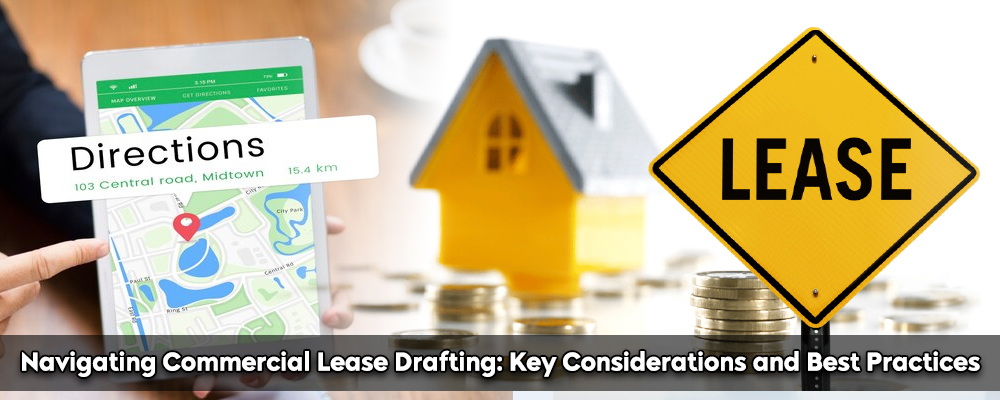A solid commercial lease will lay out the ground conditions for the rental arrangement. It will strike a balance between the landlord’s rights and the tenant’s interests, ensuring that everyone benefits from the transaction. It will also cover as many topics as feasible, allowing a commercial lease disagreement to be successfully handled by just referring to the lease, rather than resorting to costly litigation.
Need A Legal Advice
The internet is not a lawyer and neither are you. Talk to a real lawyer about your legal issue

Drafting commercial leases: Important steps
Identify the parties and the property
The first step is to explicitly identify the participants in the lease agreement, such as the landlord, tenant, and any guarantors or co-tenants. You should also offer their contact information, which includes names, addresses, phone numbers, and email addresses. In addition, you should describe the leased property, including its address, size, kind, condition, and any amenities or features. You should also state the property’s permitted use, including the type of business, operating hours, and any restrictions or requirements.
Determine the rent and the term
The second stage is to determine the rent amount, lease duration, payment method, and frequency. You should also choose the form of lease that best meets your needs, such as a gross lease, a net lease, or a modified gross lease. A gross lease is one in which the tenant pays a fixed rent and the landlord pays for all running expenditures, including utilities, taxes, insurance, and maintenance. A net lease requires the tenant to pay a lesser rent and some or all of the running expenditures, depending on the number of nets (single, double, or triple). In a modified gross lease, the tenant pays a set rent as well as some operating expenditures.
Negotiate the improvement and upkeep
The third step is to agree on who will be in charge of making, paying for, and owning the property’s upgrades and maintenance. Improvements include any changes or additions to the property that increase its value or functionality, such as renovations, fixtures, or equipment. Cleaning, painting, and landscaping are all examples of maintenance tasks. You should also agree on the standards and procedures for renovations and maintenance, including the approval process, timelines, warranties, and inspections.
Allocate taxes and insurance
The fourth stage is to allocate the property’s taxes and insurance, which include property, income, sales, and business taxes. You should also figure out who is responsible for paying them and how they are calculated and adjusted. You should also state the insurance coverage and standards that both parties must meet, such as property, liability, and business interruption insurance. You should also specify who is liable for any property damage or loss caused by fire, theft, or vandalism.
Include clauses and contingencies
The fifth stage is to include provisions and contingencies that cover both parties’ rights and obligations, as well as any hypothetical eventualities that may emerge throughout the lease term. This includes sublease and assignment clauses, which allow the tenant to sublet or transfer the lease; renewal and termination clauses, which specify conditions and options for renewing or terminating the lease; default and remedy clauses, which define a breach of the lease and the landlord’s actions; force majeure clauses, which excuse the parties from performing their obligations in certain circumstances; and dispute resolution clauses, which determine how conflicts will be resolved.
Review and sign the agreement
The final step is to examine and sign the lease agreement, confirming that it matches your objectives and expectations and is by applicable laws and regulations. You should also contact a real estate agent and a lawyer before signing the lease, as they may assist you in understanding the terms and conditions, negotiating the best deal, and avoiding potential pitfalls or hazards. Furthermore, preserve a copy of the signed lease agreement for your records, and follow up on any extra paperwork or activities required to complete the lease.
Lead India offers a range of legal services, including free legal advice and online information. You can talk to a lawyer and ask a legal question on various matters, including divorce, through our platform.





 Talk to a Lawyer
Talk to a Lawyer